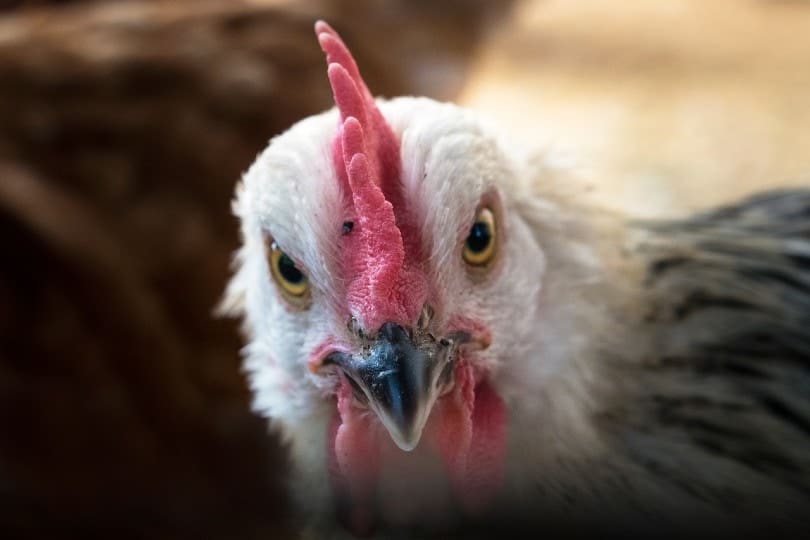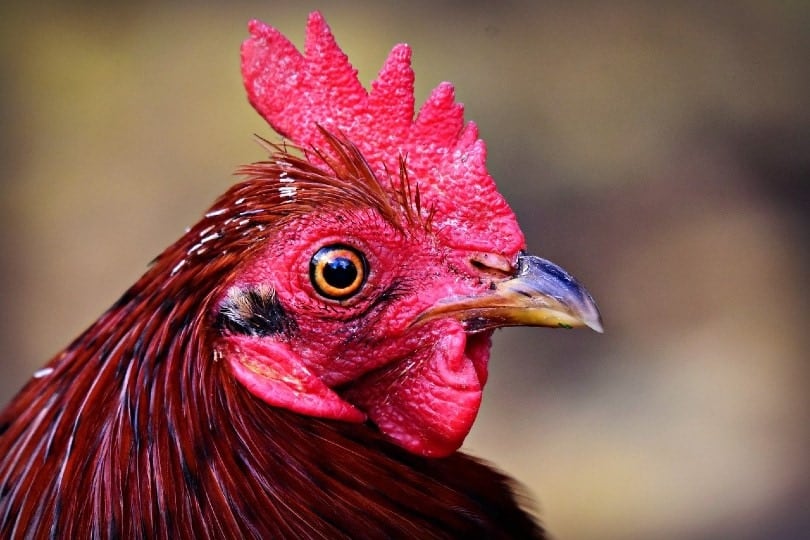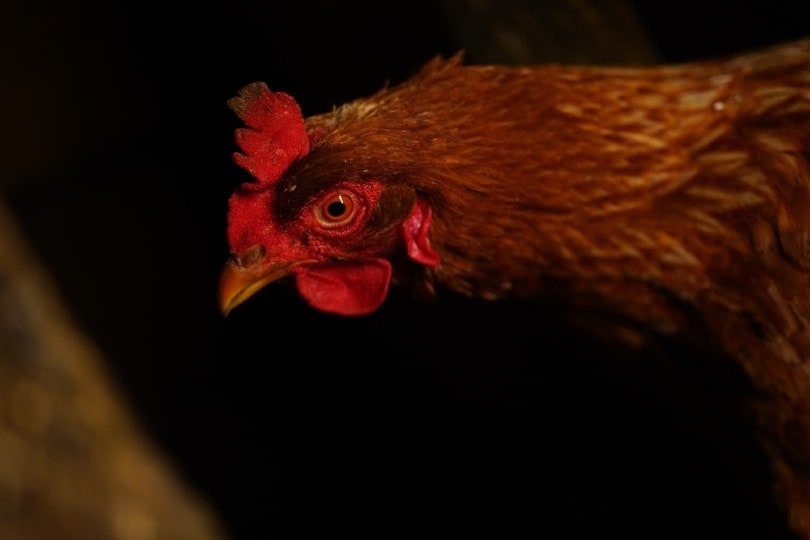Approved by Dr. Luqman Javed
Sight is the most developed sense in chickens, as is also the case with many birds. With eyes placed on either side of the head, the chicken has predominantly monocular vision, except for a small area in front of the beak, which is binocular and allows them to perceive depth and distance.
But despite everything, the vision of chickens is not perfect: chickens see extremely poorly in the dark! Let’s see the reasons for this poor night vision and some other interesting facts about the sense of sight of chickens.

Why Do Chickens See Badly in the Dark?
The retina of vertebrates, such as birds and mammals, contains photoreceptor cells called cones and rods, and these are responsible for bright and low light vision, respectively. Thus, the rods are necessary for dim-light vision and do not detect colors.
The primary reason chickens don’t see well in the dark is because they have a surprisingly low number of rods—lower than the amount humans have.
Scientists believe that an ancestor of mammals had developed an advanced visual system but that this faculty was lost during part of mammalian evolution, possibly during a period when mammals were primarily nocturnal. They believe that nocturnal behavior suppressed the evolving need for better color perception and visual acuity, ultimately leading to the loss of some cones.
But, in the case of birds, like chickens, their vision has evolved differently.
Indeed, chickens never had a nocturnal ancestor because they evolved from similar lineages as those of dinosaurs, which didn’t have the need to evolve specialized low-light vision.
In short, our nocturnal ancestors mainly exploited the sensitivity of the rods to the detriment of color vision. The evolution of chickens has done the opposite.

Do All Birds Have Poor Night Vision?
Most birds have poor night vision, except for owls, nightjars, and woodcock, as well as some hawks and other birds of prey. Furthermore, most mammals dangerous to chickens have at least good or even excellent night vision. Therefore, chickens are at a considerable disadvantage when the sun goes down, hence the importance of not letting your chickens roam free overnight in your backyard!
Can Chickens See in Color?
The chicken has six types of cones in the retina of the eye instead of three in humans. Because of this, the chicken is said to be tetrachromatic, while humans are trichromatic. But, most of all, it means that chickens see colors differently.
Chickens also have cones sensitive to ultraviolet light. Thus, the light that reaches the retina of the chickens also passes through colored micro-droplets of oil. They further increase the number of colors the chickens can distinguish by acting as filters for the corresponding colors.
For example, a hen can use UV vision to see if her chicks are healthy. Growing feathers reflect UV better, so they know which chicks are the most vigorous.

How Does the Vision of Chickens Compare to That of Humans?
The retinas of chickens and humans are both rich in cones, demonstrating the importance of color vision in both species. But in chickens, this manifests as a ratio of three cones to two rods, whereas the human retina exhibits a cone-to-rod ratio of one cone to 20 rods, which is why we have better night vision than chickens.
In addition, the chicken’s eyes are protected by two horizontal lids, just like those of humans. However, they have a thin and almost transparent third eyelid, called the nictitating membrane. This slides back and forth, protecting the eye and distributing tear secretions.
Fun fact: If you’ve ever watched chickens walk, you’ve probably noticed that their gait is a bit peculiar, and their heads swing in a pendulum motion. In fact, to see well, the chicken must keep their head fixed as long as possible when moving: the head remains fixed while the body moves forward, then the chicken lunges forward while the body does not move, then stays fixed while the body moves forward, etc. This is called the optokinetic reflex: the immobility of the gaze compensates for the blur associated with movement.
Finally, the chick has very sensitive deep-brain photoreceptors that constantly analyze the photoperiod’s duration and play an essential role in triggering physiological cycles, such as laying, molting, and brooding.

Final Thoughts
Chickens see colors better than we do, but they haven’t been spoiled for their night vision. Their evolution from the time of the dinosaurs meant that they never needed to see well in the dark, making them easy prey for their nocturnal predators. Therefore, they need their human caretakers to protect them after dark!
Featured Image Credit: Anton_dios, Shutterstock
